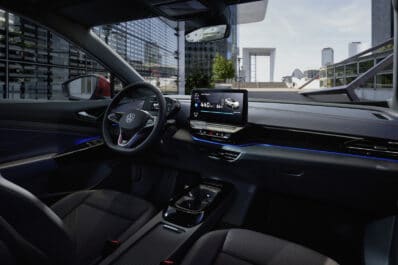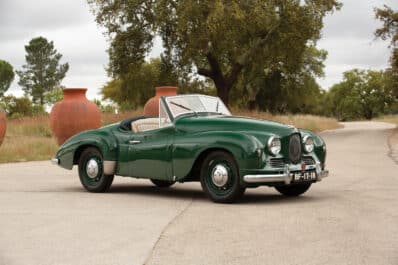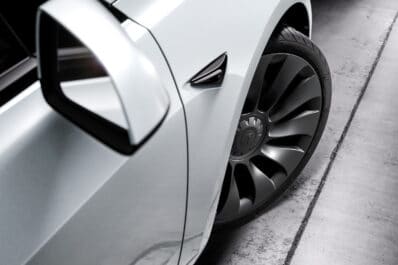With a presidential mandate aiming to get the nation on a fast road to electrification, one of the big challenges will be setting up a nationwide EV charging network, but officials in several North American cities are betting one of the quickest solutions is to set up chargers right where people park.
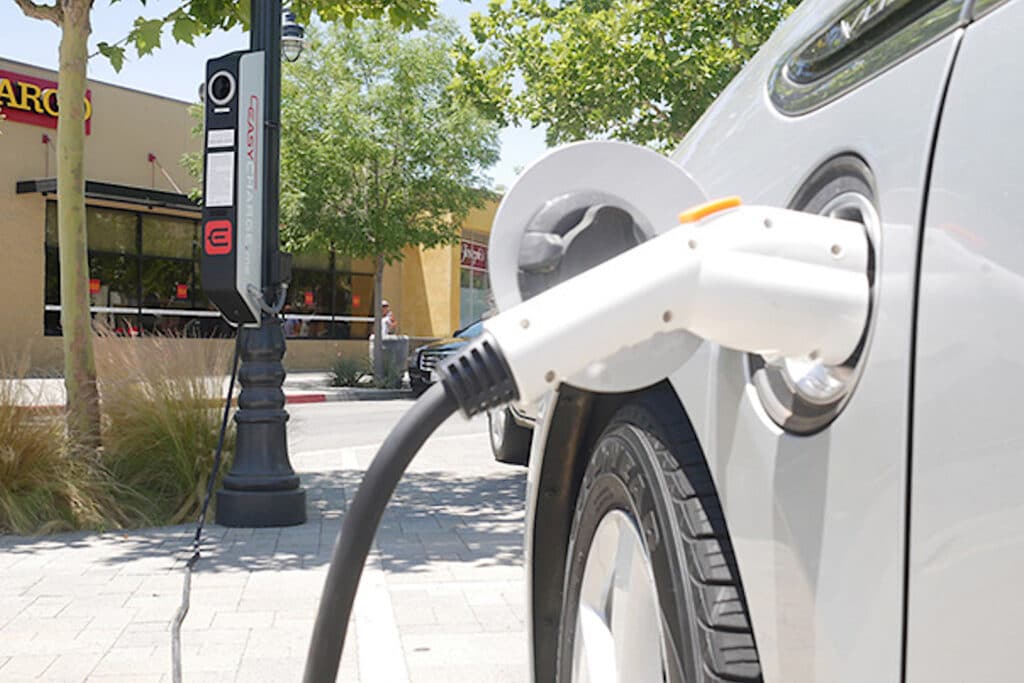
In Kansas City, as many as 60 EV chargers will be installed in streetlight poles, the same approach being piloted in Los Angeles and Montreal. The approach makes sense, according to Miriam Bouallegue, project manager for sustainable transportation for KC’s Metropolitan Energy Center, because it makes it easier for renters and others without access to a home charger to own and operate an EV.
“There’s a big gap with EV charging for renters and people who don’t own their home,” said Bouallegue in a statement announcing the new project. “They don’t have the ability to install an outlet and may not have a designated parking spot if they live in a complex. With curbside charging, people can just park their cars like they normally would and plug in.”
Chargers critical to meeting Biden EV mandate
Last week, President Joe Biden signed an executive order that, if fully implemented, would see zero-emissions vehicles reach 50% of U.S. sales by 2030. While hydrogen fuel-cell vehicles are included in that target, the vast majority of future ZEVs are expected to be plug-in hybrids or pure battery-electric vehicle.
Biden also has called for the installation of 500,000 chargers nationwide in a bid to give future EV owners the flexibility motorists have with today’s gas and diesel refueling infrastructure. While experts generally believe that 80% of charging will be done at home or office, chargers will be needed for longer trips and for those who have no immediate access to chargers of their own.
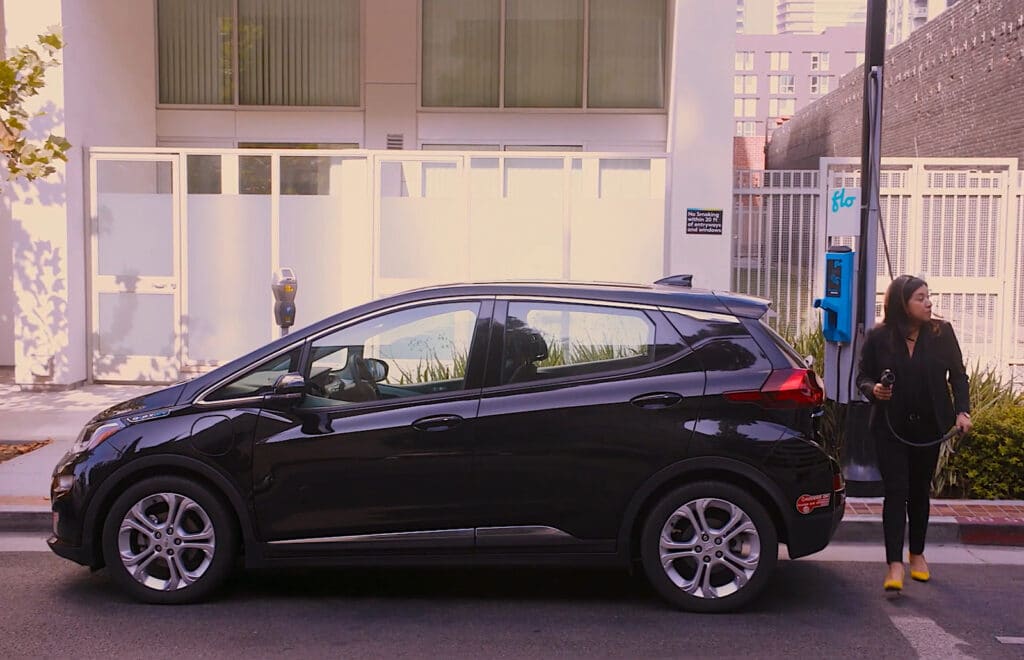
Companies like ChargePoint, EVgo and Electrify America are rapidly building out their networks, in many cases setting up the electric alternatives to conventional service stations — or even adding chargers alongside fuel pumps. But EV proponents are looking for other ways to minimize the challenges of keeping battery packs charged up.
Montreal was among the first communities to install chargers at street parking locations. The project showed a “clear correlation between the presence of a charging station and, over time, the adoption of the EV in that area” according to a spokesman, as noted by AutoBlog.
Los Angeles is setting up a similar program and already has about 420 chargers built into streetlight poles, with more to come.
Some key advantages
The approach has a number of advantages. For one thing, it locates chargers in areas of potentially significant traffic density. And it takes advantage of existing electric infrastructure. Most modern light poles were set up to use high-powered sodium vapor lights. New LED street lighting is far more efficient and means there is extra “juice” available without rewiring.
Partners in the Kansas City program include the National Renewable Energy Laboratory, (NREL), as well as the U.S. Department of Energy which provided much of the funding.
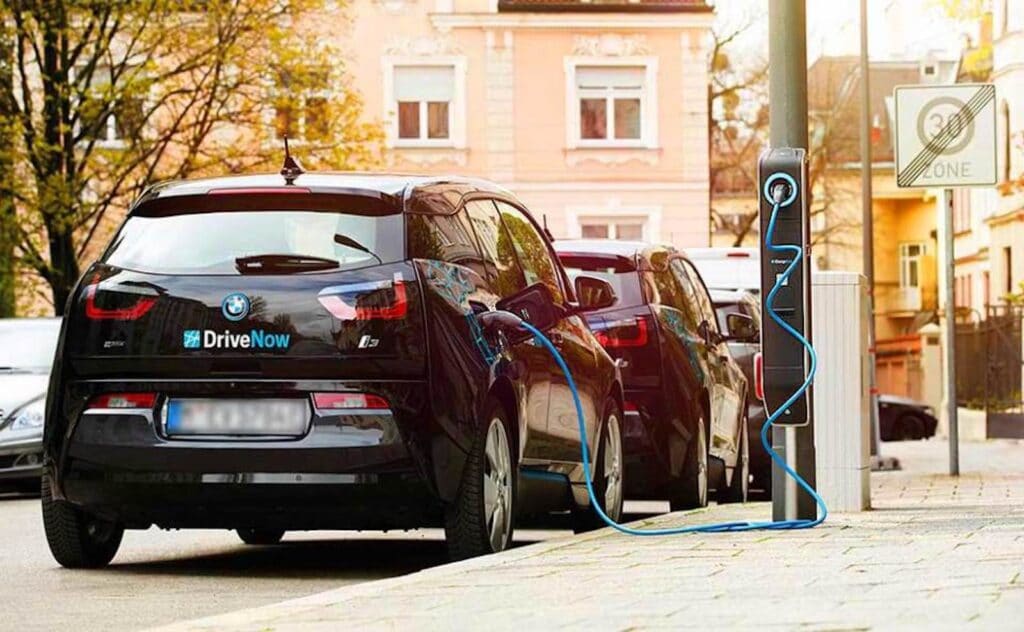
“This is a fairly new area for transportation planners,” Erin Nobler, NREL project manager, said in a description of the project published by the Association of Metropolitan Planning Organizations. “It takes time and is frustrating — but that’s a good thing. We’re all so used to funding efforts where we have to hit milestones and deliverables. But it is OK and encouraged to pivot. We’re looking for the best solution, not the easiest.”
EV owners who plug into the new Kansas City chargers will pay 22 cents per kilowatt-hour for energy, plus any regular parking fees.
Charging up the charging network
According to federal data, there are now about 104,000 public charging stations in the U.S., 18% of which are quick chargers capable of giving an 80% top-off of the typical battery pack in under an hour. The rest are 240-volt Level 2 systems that more often require 8 to 10 hours for a full recharge.
Money for EV chargers — about $7.5 billion — is included in the Biden infrastructure bill now facing a vote in the full Senate. The measure will still have to go through the House before a compromise package can be hammered out and then sent to the president for his signature. But a group of 28 Democratic House members are calling for significantly more money for a charging infrastructure — $85 billion that would be used not only to set up chargers but also energy generating facilities.
House Transportation Chairman Peter DeFazio, one of the House members calling for the funds, Said, “a rapid and extensive build-out of electric vehicle charging infrastructure supported by the federal government is crucial if consumers are to adopt zero emission vehicles at the scale and pace needed to stave off climate catastrophe.”



